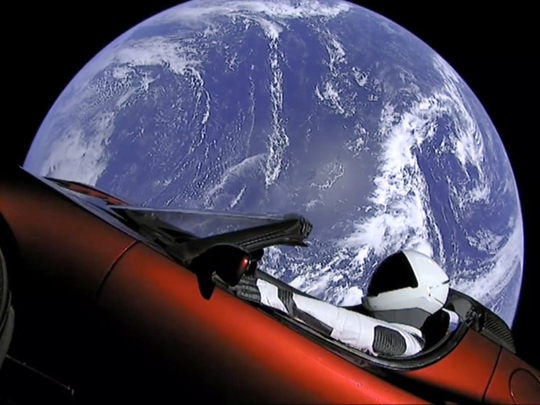
With Elon Musk and his SpaceX Falcon Heavy rocket thundering heavenward last week, my dream is fulfilled.
Back when America was a real country — which is to say before Vietnam, when America was the grand and grandiose land of surf ‘n’ turf, of station wagons with little yachting flags on the doors, of women who were cute and men who were manly, back when there were no poor people, and if there were, our B-52s stood ready — back in this swaggering parade of a country, there was only one problem. The Russians.
In 1957, the Russians fired a tiny satellite into orbit, and America panicked. With our Princess phones, wraparound windshields and automatic pop-up toasters, we had thought we led the world in technology, but now it turned out we were a backward, ignorant oaf among nations.
Instantly, students oversubscribed to classes in Russian. They took physics and engineering. Scientists learned much from Sputnik about orbital drag and the ionosphere, but all they really cared about was putting up a satellite of our own. A bigger, better satellite, it goes without saying, and one that was just as useless as Sputnik. Usefulness wasn’t the point.
The point was grandeur. For grandeur, you need uselessness. What use is the Statue of Liberty? America is the country that vindicated sociologist Thorstein Veblen’s theory of conspicuous consumption: the pointless extravagance of the rich to invoke the envy of the other rich. America had a bigger dream to dream than utility.
Soon we were sending up rockets with chimpanzees, useful for finding out if we could send up rockets with humans in them, itself a pointless endeavour.
Then President John F. Kennedy announced the biggest, most useless space shot of all — we would put a man on the moon. We did. Then we put another one up there. And more. They didn’t have a lot to do, perhaps. An astronaut named Alan Shepard hit a golf ball, one day. He said it went “miles and miles.”
Shepard came closest to fulfilling the dream I’d had for American space travel, the great futile grandeur.
But I’d dreamed bigger. Let the Russians do their lab experiments up there in space, let them divine the essence of the universe. For me and my country, I envisioned a sea-to-shining-sea stunt the Russians could never understand, much less duplicate.
I pictured a secret payload to be hurled into endless orbit around the Earth. There would be the whitewall tyres, the eight-port front fenders with hooded headlights and enough chrome to warp the entire reflected world into gnarly absurdity — yes, a Buick Roadmaster.
The Buick Roadmaster of that era signalled not that it was going someplace, such as the end of history foreseen by the Russian Communists, but that it had already arrived. Unlike low-slung foreign jobs that looked as if they were going 100mph while standing still, the Buick Roadmaster looked as if it was standing still at 100mph. It was an ultimate in itself, maybe the Ultimate.
Elon Musk, born in South Africa, is the true American, the immigrant who understood my dream last week. He launched a gigantic rocket. The payload was not a Buick Roadmaster but his Tesla car company’s $100,000-plus Roadster, bright red. He then released the Tesla into a possibly endless journey through the asteroid belt. He put a space-suited mannequin named Starman behind the wheel, one arm jauntily laid along the top of the door. Then he beamed back pictures of the view through the windshield, the road to forever. And on the dashboard, a two-word reminder. For the Russians, for us, for Starman? “Don’t Panic.”
My dream come true.
— Washington Post
Henry Allen, a former Washington Post reporter who won a Pulitzer Prize for criticism, is the author, most recently, of Where We Lived — Essays on Places.








